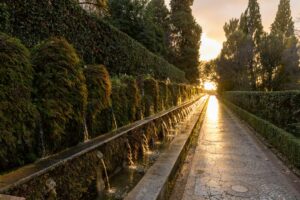Nestled in the hills of Tivoli, just a short distance from Rome, the Villa d’Este Gardens offer a breathtaking sensory experience that transcends time. Renowned as one of the most beautiful gardens in the world, this Renaissance masterpiece dazzles with over 500 gravity-fed fountains, dramatic terraces, moss-covered grottos, and ancient cypress-lined pathways. A UNESCO World Heritage Site since 2001, Villa d’Este is not merely a garden; it is a living symbol of artistic brilliance, engineering innovation, and aristocratic ambition.
The history of Villa d’Este begins in 1550 when Cardinal Ippolito II d’Este—son of Lucrezia Borgia and grandson of Pope Alexander VI—was appointed governor of Tivoli. Disheartened by his failed papal aspirations, Ippolito channeled his wealth and vision into transforming a neglected Benedictine monastery into an extravagant villa and garden, designed to rival the splendor of the Vatican itself. The renowned architect Pirro Ligorio was tasked with bringing his vision to life, using ancient Roman techniques and hydraulics to craft a spectacular landscape—without the aid of a single mechanical pump. The result was a garden so remarkable that it became the standard for aristocratic gardens throughout Europe.

Villa d’Este, Tivoli, Italy. The Hundred Fountains

